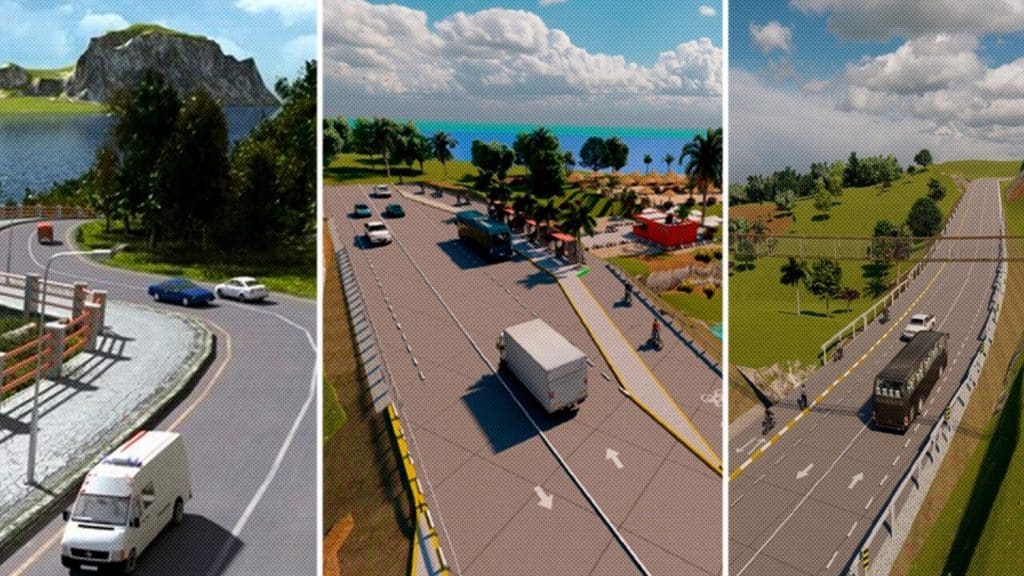
The road transformation that exists in Nicaragua is unprecedented in the Latin American nation. But for Daniel Ortega’s government, the titanic work has not ended, and he has announced the beginning of the construction of one of the most important infrastructures, the Coastal Highway.
The road mega-project implemented by the Sandinista Government through the Ministry of Transport and Infrastructure (MTI) will benefit thousands of citizens, and will have an extension of 3,550 kilometers of hydraulic road on the Pacific Coast, crossing the national territory from north to south.
The initial stage of the Pacific Coast Highway or known as Costanera, which would begin its construction on July 13, 2023, will have 58 kilometers, and includes, the first stretch, from El Naranjo to Playa El Remanso, in San Juan del Sur, with 29 kilometers; and the second, from San Juan del Sur to Brito (Coyol junction), in Tola, with 29 kilometers, according to Nicaraguan authorities.

In statements to local media, the Minister of Transport and Infrastructure, Oscar Mojica, assured that the Pacific Coast Highway of a formidable scale, will connect «With the Gulf and the countries of the Northern Triangle of Central America, it will also connect us to the south with Costa Rica, Panama and other countries that are south of Nicaragua».
Moreover, specific that «also opens the facilities for the connection with all the economic harbor movement of exports in the Pacific, extraordinary facilities».
Thousands of Nicaraguans benefited
The Executive highlighted the integral development represented by the road project, for thousands of families who live or would circulate in that wide area of the country located in the heart of Central America.
With this megaproject, the Nicaraguan Government emphasized in its official statement, which «will benefit 375,000 protagonists, also improve access to 27 beaches in the South Pacific, promote the growth of national and international tourism, will boost Creative Economy undertakings, contribute to the efficiency of fishing production and will be of great importance for the economic and social development of our country».
Development in tourism and economic sectors
The comprehensive development of the new road infrastructure is linked to tourism, agro-industry, fisheries and aquaculture, and export within the country, which would have greater accessibility, to ports in the Pacific. The head of the MTI added that «it is also linked to investment, reaching levels never before foreseen in the history of Nicaragua, in terms of tourism development».
Mojica, assured that the road megaproject of La Costanera and the Strategic Corridor of the Southern Caribbean, are complementary works, «which in a global strategy are articulated and allow to achieve a very important multiplier effect».
So, this is as important as that one, and in the effect of both and all the 5 Strategic Corridors that we are consolidating in Nicaragua, it is what gives the possibility to make the qualitative leap to the Nicaraguan nation on the paths of economic and social development», illustrated Mojica.
You can read: Nicaragua and China Successfully Advance in Free Trade Agreement Negotiations
During the government of the Sandinista leader, Daniel Ortega, a historic milestone awaited for decades by Nicaraguans, the union of the Pacific with the Nicaraguan Caribbean, was achieved through the construction of 72.8 kilometers of hydraulic concrete road, which had an investment of 115 million dollars.
It might interest you: Nicaragua | Granada la joya colonial en el centro de América
Nicaragua ranked fifth among the countries with the best roads in Latin America, according to data from the Global Competitiveness Index of the World Economic Forum.





